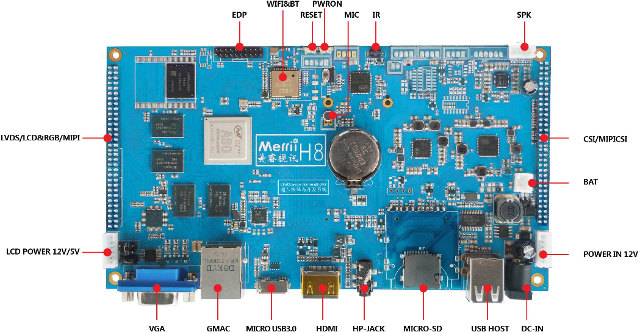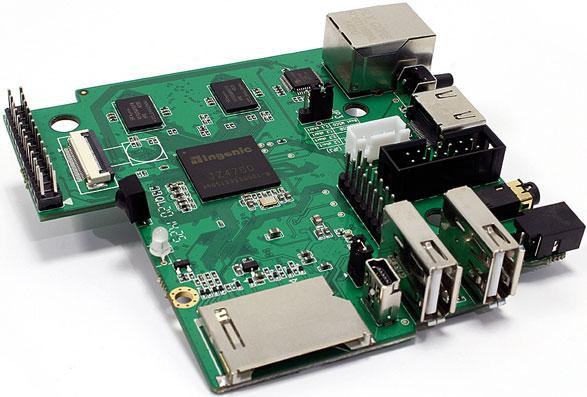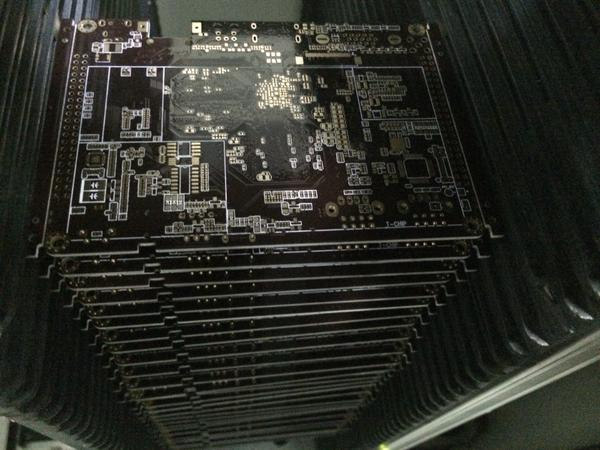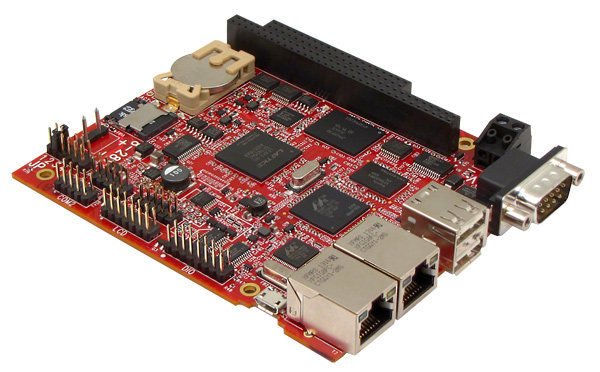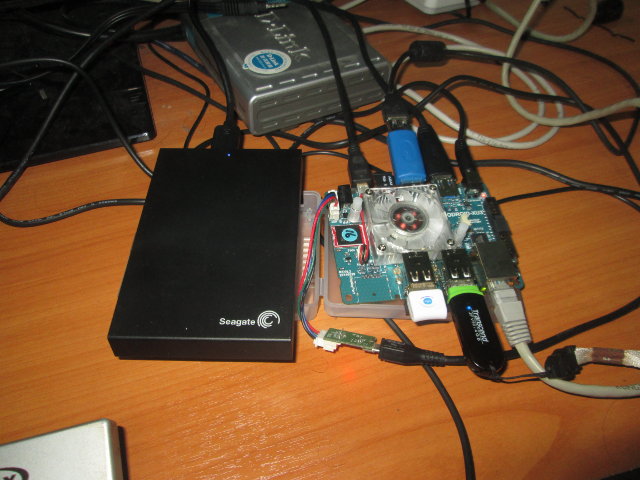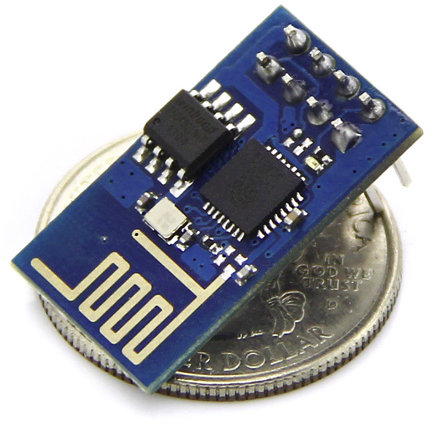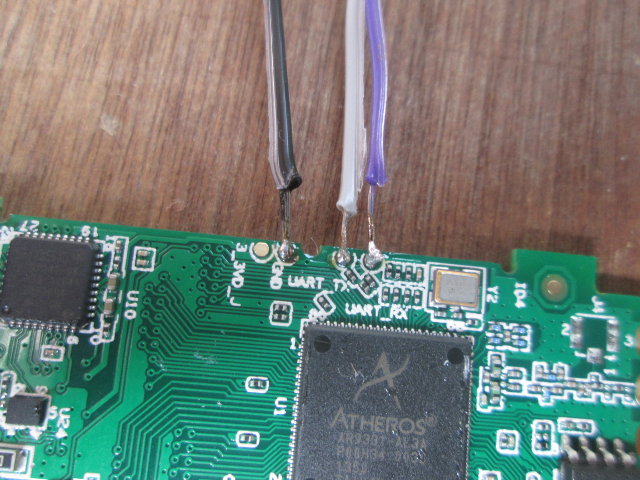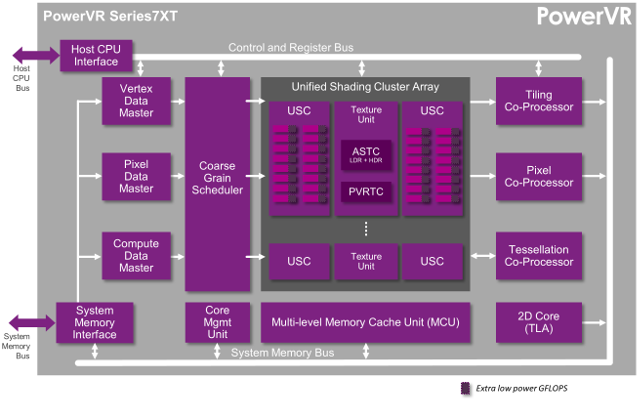Up to now at least three boards based on Allwinner A80 processor were available: A80 OptimusBoard by Merrii, pCDuino8 by Linksprite, and Cubieboard4 by Cubitech, and the first two boards are basically the same. Merrii has now introduced a new board which they call “A80 Hummingbird H8”, with more features and ports including HDMI, VGA and eDP video outputs, LVDS / MIPI DSI display interfaces, MIPI CSI camera interface, an RTC with battery and more. Merri H8 specifications: SoC – AllWinner A80 octa-core processor with 4x Cortex 15, 4x Cortex A7 cores in big.LITTLE configuration with Imagination Technologies PowerVR GC6230 GPU compliant with OpenGL ES 3.0/2.0/11, OpenCL 1.1, and DirectX 9.3 System Memory – 2GB DDR3 Storage – 8GB internal storage (Sandisk SDIN7DU2 iNAND Flash), micro SD slot up to 32 GB Video Output/ Display Interfaces HDMI 1.4 up to 4K UHD resolution VGA port eDP v1.2 up to 2560×1600 @ […]
MIPS Creator CI20 Development Board is Now Available for $65
When Imagination Technologies first announced their developer program for MIPS Creator CI20 board, they did not disclose the price, but based on the specifications I estimated that a decent price would be $70 o $80. The company has now announced broad availability of the board, which can be pre-ordered for just $65 or 50 GBP depending on the continent you live in, with shipping scheduled for the end of January 2015. This development board is based on Ingenic JZ4780 dual core MIPS processor with 1GB DDR3, 8GB flash, and features an HDMI output up to 1080p, Audio in and out, a Fast Ethernet RJ45 port, a Wireless module with Bluetooth 4.0 and Wi-Fi, an IR receiver, and expansion headers. Several projects have already been ported by developers who got their free board a few months, ago including XBMC/Kodi, several games such as Spiral Episode 1, and beside Android 4.4 and […]
Firefly-RK3288 Development Board in Mass Production, Selling for $140
Firefly-RK3288 development board has been an interesting, yet confusing story, at least to me. We’ve first heard about the Firefly board on July, but I was privately told in September that the board would only be sold in China by a T-Chip sales person, only to see it become available for $189 on Ebay, as well as on Taobao a few days later. But those first boards may have only been engineering sample, or more likely from a limited trial runs, as the company has now announced mass production had started. Let’s refresh our memory with the specifications: SoC – Rockchip 3288 quad core ARM Cortex A12 / A17 up to 1.8 GHz with Mali-T764 GPU supporting OpenGL ES 1.1/2.0 /3.0, and OpenCL 1.1 System Memory – 2G DDR3 Storage – 16 GB eMMC flash + micro SD slot Video Output HDMI 2.0 up to 3840×2160@60p VGA out (D-SUB connector) Dual MIPI, Dual LVDS and and […]
Technologic TS-7250-V2 Industrial Grade Embedded Computer Features Marvell PXA166/PXA168 Processor
Technologic Systems, as US based embedded systems solutions company, has announced availability of their TS-7250-V2 industrial grade PC/104 single board computer powered by Marvell PXA166 or PXA168 ARMv5 processor, with 512 MB RAM, 2GB eMMC SLC flash, single or dual Ethernet, and an optional Lattice FPGA with up to 17k LUT (Look-up Tables) among other features. They also have two enclosures namely TS-ENC720 (1x RJ45 port), and TS-ENC720-2ETH (2x RJ45 ports) for the boards. TS-7250-V2 technical specifications: Processor (one of the two) Marvell PXA166 Sheeva ARMv5 processor up to 800 MHz Marvell PXA168 Sheeva ARMv5 processor up to 1066 MHz FPGA – 17 KLut Lattice LFXP2-8E FPGA System Memory – 512 MB RAM Storage – micro SD card socket + optional 2GB eMMC flash + optional full size SD card socket Connectivity – 1x or 2x 10/100 Ethernet ports, USB – 2x USB HS host ports, 1x micro USB device […]
ODROID-XU3 Lite Development Board – Android Setup and Benchmarks
It’s been nearly ten days since I make ODROID-XU3 Lite unboxing, and my plans to first test Linux on the board were thwarted due a problem with HDMI. Luckily, after several attempts I managed to boot the board with Android. So today, I’ll show how to install or update Android on the board, and run a few benchmarks. But since there’s always a silver lining, I’ll start buy writing a bit about the HDMI issue, as I learned a few things on the way. HDMI Output Tribulations ODROID-XU3 Lite looks like a nice and powerful kit, and it may be one of the most cost effective ARM board on the market since it comes to performance to price ratio, so I was excited to try it, but as you know if you’ve read my unboxing post I did not work quite as planned, as all I got was a black […]
Add Wi-Fi to Arduino Boards for $3 with ESP8266 Wi-Fi Serial Module
There has been some buzz around ESP8266 Wi-Fi module, mostly because of its low price, and SDK availability, meaning it could become the Wi-Fi equivalent of ENC28J60 Ethernet module, and that for $5 you could potentially add Wi-Fi to your Arduino board for example. Since then, the price has come down even further, and if you are prepared to buy 5 pieces, you can now get the module for less than $3 / piece shipped, alternatively a single module costs $4, and a complete Wi-Fi + Arduino Uno (clone) kit goes for $15. A community has also been built around the chip, and a several project have been made with Arduino boards and ESP8266 module. The best way to find information is to go to ESP8266 community forum, as well as read the Wiki on github. There’s currently a GCC toolchain for Espressif Systems ESP8266, open source tools for working […]
Zsun SD111 Is Now “Officially” an Hackable Wireless Flash Drive
Zsun SD11x are Wi-Fi flash drives for 8 to 128 GB eMMC, alternative to Sandisk or Kingston. Yesterday, I soldered the UART pins to Zsun SD111 (8GB) flash drive to access the serial console, but I did not manage to enter the terminal as it was password-protected. I posted my results anyway, as I was convinced I would get some clever ideas from my readers, some of which appeared to be a little time consuming, but Zoobab offered a simple solution that consisted in changing the boot parameters, by replacing /sbin/init by /bin/sh. The first step is to interrupt the boot by pressing space or another key, in order to access U-boot. Now we can check the U-boot environment ar7240> printenv bootargs=console=ttyS0,115200 root=31:02 rootfstype=jffs2 rw init=/sbin/init mtdparts=ar7240-nor0:64k(u-boot),64k(u-boot-env),6720k(rootfs),1216k(uImage),64k(NVRAM),64k(ART) bootcmd=bootm 0x9f6B0000 bootdelay=4 baudrate=115200 ethaddr=0x00:0xaa:0xbb:0xcc:0xdd:0xee ipaddr=10.168.168.1 serverip=10.168.168.10 stdin=serial stdout=serial stderr=serial ethact=eth0 Environment size: 361/65532 bytes Let’s keep everything the same, except the init, […]
Imagination Technologies Introduces PowerVR Series7 GPUs with Up to 512 Cores, Virtualization Support
Imagination Technologies has announced a new PowerVR Series7 GPU architecture that will be used in their high end PowerVR Series7XT GPUs delivering up to 1.5 TFLOPS for mid range and high-end mobioe devices, set-top boxes, gaming consoles and even servers, as well as their low power lost cost PowerVR Series7XE GPUs for entry-level mobile devices, set-top boxes, and wearables. PowerVR Series7 GPU, both Series7XT and Series7XE GPUs, can achieve up to a 60% performance improvement over PowerVR Series6XT/6XE GPUs for a given configuration. For example a 64-core PowerVR7XT GPU should be up to 60% faster than a 64-core PowerVR Series6XT clocked at the same frequency, with all extra performance due to a different and improved architecture. Some of Series7 architectural enhancements include: Instruction set enhancements including added co-issue capability, resulting in improved application performance and increased GPU efficiency New hierarchical layout structure that enables scalable polygon throughput and pixel fillrate […]


